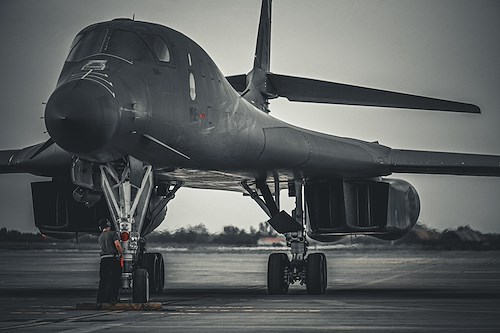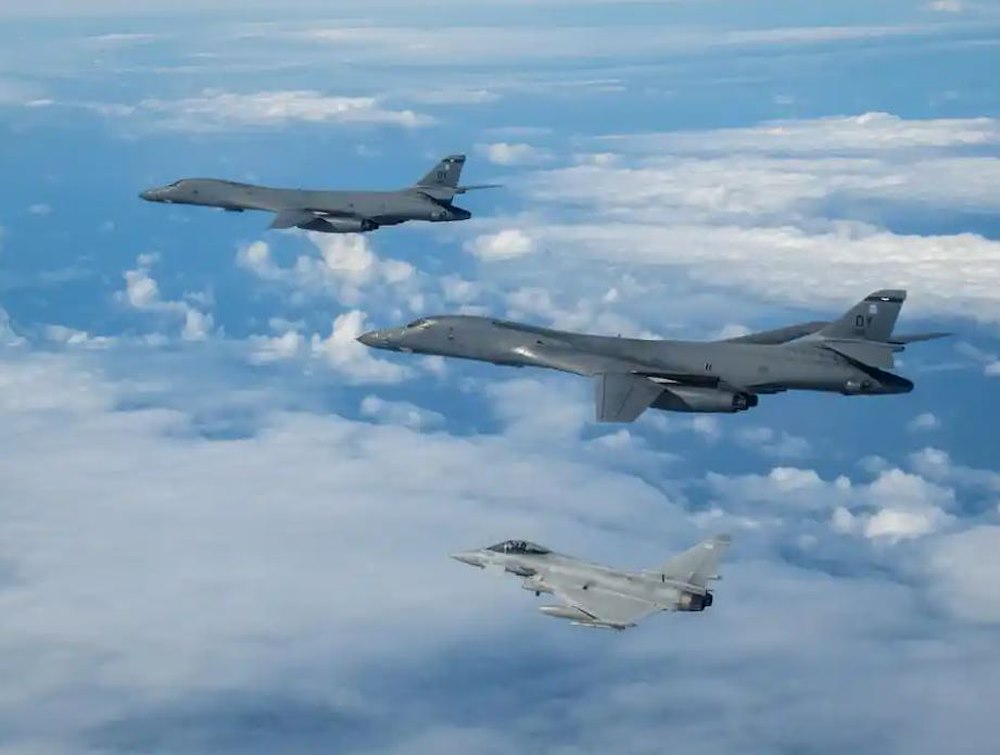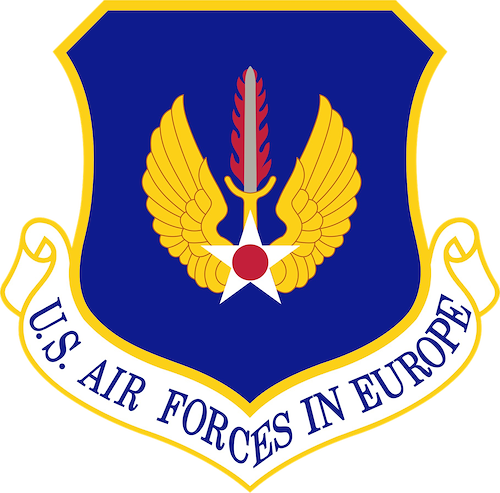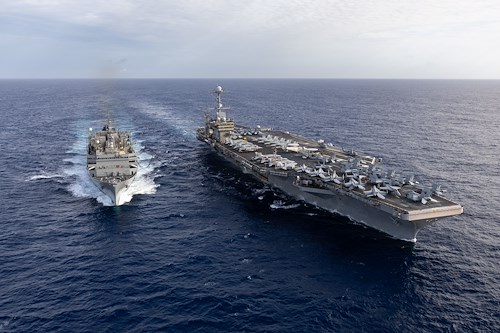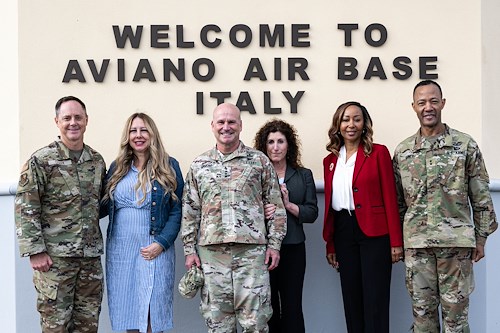Gallery contains 4 images
×
Photo 1 of 4
U.S. Air Force B-1B bombers conclude BTF 24-2
An Airman from the 9th Expeditionary Bomb Squadron prepares to complete post-flight maintenance on a B-1B Lancer assigned to Dyess Air Force Base, Texas, on the flightline at Morón Air Base, Spain, during Bomber Task Force Europe April 19, 2024. The B-1 and its aircrew completed a trilateral integration with the Ghanaian Air Force and Army, along with United Kingdom and U.S. special forces in support of exercise Flintlock.
Photo by: USAFE-AFAFRICA Public Affairs
Photo 2 of 4
U.S. Air Force B-1B bombers conclude BTF 24-2
B-1B Lancers with the 9th Expeditionary Bomb Squadron from Dyess Air Force Base, Texas, inflight with a British Typhoon fighter jet in support of Bomber Task Force Europe, April 21, 2024. BTF operations are U.S. Strategic Command's means of conducting Dynamic Force Employment in support of the Department of Defense's National Defense Strategy at the direction of the President of the United States.
Photo by: UK Ministry of Defence
Photo 3 of 4
U.S. Air Force B-1B bombers conclude BTF 24-2
B-1B Lancers with the 9th Expeditionary Bomb Squadron from Dyess Air Force Base, Texas, takeoff for a mission in support of Bomber Task Force Europe at Morn Air Base, Spain, April 21, 2024. BTF operations are U.S. Strategic Command's means of conducting Dynamic Force Employment in support of the Department of Defense's National Defense Strategy at the direction of the President of the United States.(U.S. Air Force photo by Senior Airman Zachary Wright)
Photo by: Senior Airman Zachary Wright
Photo 4 of 4
U.S. Air Force B-1B bombers conclude BTF 24-2
Senior Airman Luke Beauchemin, 9th Expeditionary Bomb Squadron crew chief, marshals in a B-1B Lancer assigned to Dyess Air Force Base, Texas, at Morón Air Base, Spain, during Bomber Task Force Europe April 19, 2024. Airmen from the 9th EBS along with two B-1B Lancers completed a trilateral integration with the Ghanaian Air Force and Army, and both United Kingdom and U.S. special forces in support of exercise Flintlock and BTF Europe. (U.S. Air Force photo by Staff Sgt. Holly Cook)
Photo by: Staff Sgt. Holly Cook
U.S. Air Force B-1B Lancers assigned to the 9th Expeditionary Bomb Squadron, returned to Dyess Air Force Base, Texas, as they concluded Bomber Task Force 24-2 at Morón Air Force Base, Spain, April 23.
During their mission home, the bombers integrated with Typhoons from the United Kingdom. They conducted escort training with their Allies before leaving the theater. All training objectives were achieved.
During the month-long deployment, which kicked off March 24 the B-1Bs and supporting personnel conducted several missions to train alongside Allies and partners across the European region, including the Czech Republic, Greece, Türkiye, and the U.K.
“This deployment was another excellent opportunity for U.S. forces to demonstrate our ability to operate in conjunction with our Allies and partners to enhance our combined strength,” said Gen. James Hecker, commander of U.S. Air Forces in Europe – Air Forces Africa and NATO Allied Air Command. “It’s critical to bolstering our extended deterrence and defense network and capable of decisively meeting the security challenges of today and tomorrow.”
Through these missions, USAFE-AFAFRICA enables dynamic force employment in the European theater, providing strategic predictability and assurance for Allies and partners, while contributing to deterrence by introducing greater operational unpredictability for potential adversaries.
“To uphold stability worldwide, it is imperative to have a force proficient in operating across multifarious domains,” said Lt. Col. Ryan Stillwell, 9th EBS commander. “The Agile Combat Employment framework in partnership with our Allies, aims to form an integrated unit, poised and equipped to swiftly counter any adversary aggression.”
BTF 24-2 is a routine part of Large-Scale Global Exercise 2024, an umbrella term that incorporates dozens of separate exercises and military activities, under multiple combatant commands, that enable the U.S. Joint Force to train with Allies and partners and improve shared understanding, trust and interoperability on security challenges across the globe.

